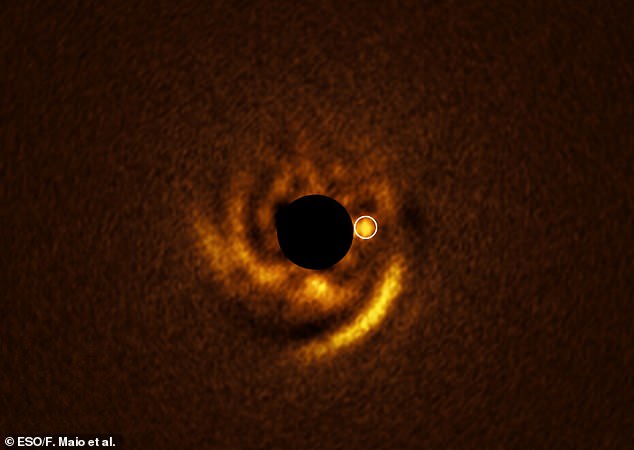
Witness a Planet’s Birth: Stunning Images Capture Distant World Sculpting Cosmic Dust Spirals
Astronomers Capture Rare Glimpse of Planet Birth 440 Light-Years Away
Astronomers have captured stunning images of a newborn planet sculpting spirals of dust and gas around the young star HD 135344B, located 440 light-years from Earth. The planet, estimated to be twice Jupiter’s size and orbiting as far as Neptune does from the Sun, offers a rare window into planetary formation.

Caption: Spirals of dust and gas around HD 135344B, likely shaped by a forming planet (Credit: ESO/ERIS)
Using the European Southern Observatory’s Very Large Telescope (VLT) upgraded with the Enhanced Resolution Imager and Spectrograph (ERIS), researchers detected light emitted directly by the protoplanet—the earliest stage of planetary growth. This marks the first direct evidence linking spiral patterns in protoplanetary disks to newborn planets.
“We’re witnessing a planet’s formation in real time—a process our own solar system underwent over 4 billion years ago,” said lead author Francesco Maio of the University of Florence. The protoplanet lies at the base of a spiral arm, confirming theories that such structures arise from planets “sweeping” material from their orbits.

Caption: The protoplanet (bright spot) detected at the base of a spiral arm (Credit: ESO/ERIS)
A Second Mystery: V960 Mon and a Potential Brown Dwarf
In a parallel discovery, astronomers observed the star V960 Mon, 5,000 light-years away, surrounded by fragmented spiral arms stretching wider than the Milky Way. These arms suggest a rare planetary formation mechanism called gravitational instability—where gas and dust collapse directly into planet-sized clumps under gravity, rather than gradually accumulating material (core accretion). This method is thought to form gas giants like Jupiter.
However, the object near V960 Mon might not be a planet at all. Researchers speculate it could be a brown dwarf—a “failed star” too massive to be a planet (13–80 times Jupiter’s mass) but too small to sustain nuclear fusion. If confirmed, this would be the first observed instance of brown dwarf formation.

Caption: Fragmented spirals around V960 Mon hint at gravitational instability (Credit: ESO/ERIS)
How Planets Form
Planets originate in protoplanetary disks—rotating clouds of gas and dust encircling young stars. As gravity compresses material, these disks flatten into “cosmic pizzas,” where particles collide and clump, forming planetesimals and eventually planets. HD 135344B’s spirals and V960 Mon’s fragmented arms illustrate two potential pathways: core accretion and gravitational instability.
These findings challenge existing models and deepen our understanding of cosmic evolution. “Each discovery peels back layers of mystery about how celestial bodies emerge,” says Maio. With advanced tools like ERIS, astronomers are poised to unravel more secrets of planet formation, shedding light on Earth’s ancient origins and the diversity of worlds beyond our solar system.
Featured Image: HD 135344B (bottom) and companion star (Credit: ESO/ERIS)

(Word count: ~600)


